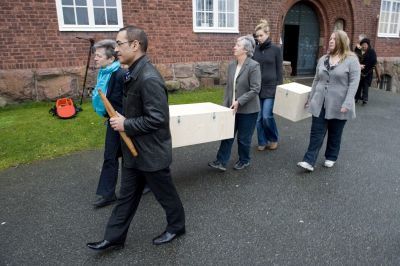Sweden returns Maori remains to New Zealand

Sweden returned human remains of Maori origin taken from New Zealand in the mid to late 19th century at an official ceremony on Wednesday, a museum spokeswoman told AFP.
The ceremony "has started and is about to end," at the Museum of World Culture in Gothenburg, spokeswoman Tina Sjoegren said, explaining that remains held in two museums, the National History Museum and the Museum of World Culture were being returned to New Zealand.
Two representatives from the Museum of New Zealand Te Papa and New Zealand's ambassador to Sweden Barbara Bridge took part in a traditional ceremony held at Gothenburg's Museum of World Culture.
"We are going to do a traditional Maori ceremony ... we are talking to the spirits and acknowledging that even though the bodies are departed the spirits have followed us and are in our memory," Teherekiekie Herewin, the manager of repatriation at the Museum of New Zealand, told AFP.
Herewin explained Sweden was returning one skull, one skeleton, two arm fragments and one hand that had been mummified.
The remains come from at least three and up to five individuals.
"The information from the museums indicated that (the remains) are Maori and they are from New Zealand, but there are very little details" about the remains and where they are from, Herewin said.
The director of the National Museums of World Culture said his museums were now aiming "to work actively for the repatriation of human remains younger than around 200 years," adding that human remains in Western museums were "mostly the result of colonial relationships and a racist view of the world," he said in a statement.
On Saturday Sweden returned 22 skulls taken from Hawaii.
Swedish museums have since 2004 returned the remains of dozens of Aborigines to Australia and a totem pole to a Canadian aboriginal tribe.
Subscribe to Independent Premium to bookmark this article
Want to bookmark your favourite articles and stories to read or reference later? Start your Independent Premium subscription today.

Join our commenting forum
Join thought-provoking conversations, follow other Independent readers and see their replies